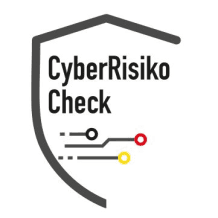Bug Bounty – An exciting concept in the world of IT security.
Companies are increasingly using bug bounty programs to secure their digital infrastructures. By involving external security researchers (also known as “ethical hackers”), vulnerabilities in applications, websites, and networks can be identified before they can be exploited by malicious actors. What exactly is behind the term bug bounty, and how can both companies and security experts benefit from this approach?
Introduction: Background and Motivation
In times of growing digital networking, the security of IT systems is coming into focus. Cyberattacks are becoming more sophisticated, and companies often face the challenge of uncovering a security vulnerability while it is still unknown to anyone. This is where the bug bounty program comes into play. It is an incentive system in which companies have security vulnerabilities in their systems identified – and reward the finder financially in case of success.
The basic idea is as old as IT security itself: to identify problems from the outside before they become real threats. W-questions such as “What is bug bounty?”, “How does a bug bounty program work?” and “Why are such programs essential for modern companies?” provide deep insights into a topic that is currently widely discussed.
What is Bug Bounty? A Clear Definition
Bug bounty refers to a structured program offered to identify vulnerabilities in software, websites, or IT infrastructures. Companies invite independent security experts to check their systems for weaknesses as part of this program. These are not illegal activities but coordinated tests conducted under contractually regulated conditions. The finder of a real security vulnerability is subsequently rewarded with a credit – a so-called bounty payment – for their contribution.
This leads to a valuable added value: companies benefit from external expertise and a fresh perspective on their systems, while security experts have the opportunity to build a reputation in the IT security community while also improving their income.
How Do Bug Bounty Programs Work?
Typically, bug bounty programs are organized through specialized platforms. These platforms act as intermediaries between companies and hackers. After registering, security experts receive a series of tasks or access to specific systems to test their security. Clear rules and framework conditions are defined to prevent abuse. The policies often include information about which systems, applications, or parts of the infrastructure may be tested and which vulnerabilities are eligible for rewards.
For better understanding: How does a bug bounty program work in practice? First, a company registers with a corresponding platform and defines a scope. Subsequently, investigative security researchers can register and begin their evaluations. If a vulnerability is discovered, the researcher submits a detailed report documenting the security hole and describing attack vectors – often also with proof of feasibility. After an internal review by the company, the report is validated, and the finder receives appropriate compensation. This process requires trust, clear communication, and efficient coordination between the parties involved.
Why Do Companies Rely on Bug Bounty Programs?
Bug bounty programs offer several significant advantages. From a business perspective, involving external experts is an extremely effective approach to identifying and addressing security deficits before they become widespread issues. Here are some main reasons why a bug bounty program is implemented:
• Proactive security strategy: By continuously searching for vulnerabilities, IT security can be improved proactively before a critical incident occurs.
• Cost efficiency: Compared to traditional penetration tests or extensive security audits, bug bounty programs often offer good value for money, as rewards are only paid for successful findings.
• Diversity of expertise: Hackers from all over the world bring different perspectives and experiences, which is particularly advantageous for new attack methods.
• Image and trust: A company that openly operates bug bounty programs sends a strong signal to its customers and business partners: it takes its security responsibility seriously.
Advantages for Security Experts: Motivation and Career Opportunities
Bug bounty programs also offer numerous advantages for hackers and security experts. It is not just about financial incentives but also about building and maintaining a reputation within the security community. Outstanding performances are often rewarded with bonuses or further business partnerships, which can promote a career in the IT security industry.
W-questions such as “Who benefits from bug bounty?” and “How can a security expert actively participate in such programs?” explain why it is worthwhile for talents to be active in this area. Especially young professionals have the opportunity to dive into demanding security projects without significant bureaucratic effort while furthering their education. The ongoing exchange with experienced colleagues from around the world also provides a tremendous increase in knowledge and practical insights that cannot be found in any textbook.
Challenges and Risks of a Bug Bounty Program
Despite the obvious advantages, bug bounty programs are not without challenges. The successful implementation of such a program requires careful planning and a well-defined framework. Missing regulations or unclear responsibilities can lead to misunderstandings or even legal implications. Some of the critical points are:
• Misuse of vulnerabilities: There is always the risk that identified weaknesses are not reported responsibly. Should a hacker make the flaw public before the company can respond, this could lead to widespread security issues.
• Overwhelming reports: In large programs, it can happen that too many reports are submitted – many of them of little value. This can place an enormous burden on the internal security team, which must examine each incident individually.
• Poor communication: Clear and transparent communication between companies and external hackers is essential. Unclear guidelines or lengthy review processes can significantly undermine trust and thus the motivation of the involved experts.
These challenges underscore the importance of implementing structured processes and clear rules to operate a bug bounty program successfully and sustainably. In practice, specialized platforms are often used to streamline and standardize the entire process – from reporting to payment.
Best Practices for a Successful Bug Bounty Program
To take full advantage of the benefits while minimizing risks, companies should observe some best practices:
• Clear communication: Establish from the beginning which areas and systems may be tested and which types of vulnerabilities are eligible for rewards. Detailed policies and a transparent process help avoid misunderstandings.
• Quick response times: An efficient internal team to validate reports is essential. Rapid communication between the company and the security expert strengthens mutual trust.
• Fair compensation: Financial recognition of performance should be appropriate and correlate with the severity of the identified vulnerabilities. A tiered compensation system can help maintain the motivation of the hackers.
• Legal framework: It is advisable to clarify legal aspects already in advance. Contracts and terms of use can help provide security for both parties and eliminate legal gray areas.
• Ongoing optimization: A bug bounty program should never be viewed as a static project. Regular adjustments and updates to policies, as well as incorporating new insights from IT security research, are essential for long-term success.
Future Trends in Bug Bounty
As IT security evolves, bug bounty programs are also continually adjusted and developed. Current and future trends include:
• Artificial intelligence and automation: AI-based systems can help identify and prioritize potential vulnerabilities more quickly before they are manually reviewed by hackers.
• Expansion of the participant pool: More and more companies, even from traditionally less digitally-oriented sectors, are relying on bug bounty. This broadens the community and fosters interdisciplinary exchange among experts.
Bug Bounty in Germany: Current Developments
The importance of bug bounty in Germany is continuously growing. According to current studies from the Federal Office for Information Security (BSI), German companies are increasingly affected by cyber threats. The Bitkom association reports that 84% of German companies have fallen victim to cyber attacks in the last two years.
Particularly in the field of bug bounty, the following trends are evident:
Increasing investments in preventive security measures
Heightened awareness of holistic security concepts
Integration of bug bounty into existing compliance frameworks
EU Compliance and Bug Bounty
With the introduction of the NIS2 directive and increased GDPR requirements, German companies must adapt their security strategies. Bug bounty plays a central role in fulfilling regulatory requirements.
Important compliance aspects:
Documentation of security measures
Regular review and updating
Proof of effectiveness to regulatory authorities
Practical Implementation in Corporate Daily Life
The integration of bug bounty into corporate daily life requires a structured approach. Experience shows that companies benefit from a gradual implementation that considers both technical and organizational aspects.
Think of bug bounty like insurance for your company: The better prepared you are, the lower the risk of damage from security incidents.
Further Security Measures
For a comprehensive security strategy, you should combine bug bounty with other security measures:
Vulnerability Management - Systematic vulnerability management
Penetration Testing - Comprehensive security tests
Security Hardening - Employee awareness
Incident Response Plan - Preparedness for security incidents
Conclusion and Next Steps
Bug Bounty is an essential component of modern cybersecurity. Investing in professional bug bounty measures pays off in the long term through increased security and compliance conformity.
Do you want to optimize your security strategy? Our experts are happy to advise you on the implementation of bug bounty and other security measures. Contact us for a non-binding initial consultation.
🔒 Act now: Have our experts assess your current security situation
📞 Request consultation: Arrange a free initial consultation for bug bounty
📋 Compliance check: Review your current compliance situation
📌 Related Topics: Cybersecurity, IT security, compliance management, risk assessment




